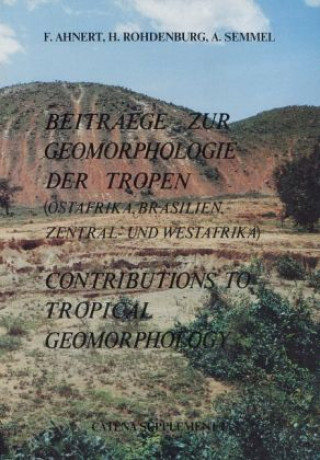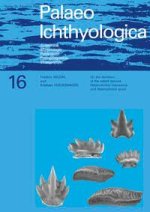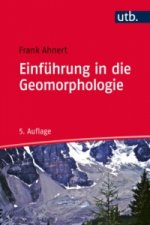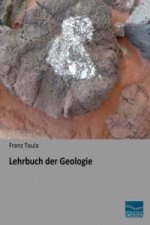
Code: 15196187
Beiträge zur Geomorphologie der Tropen
by F. Ahnert, H. Rohdenburg, A. Semmel
The inselberg region of Machakos is located in the south-eastern part of the highlands of Kenya, on the boundary between the exposed pre-Cambrian basement and its Cenozoic volcanic cover. The morphoclimate of this region is contro ... more
- Language:
 German
German - Binding: Paperback
- Number of pages: 140
Publisher: Schweizerbart'sche Verlagsbuchhandlung, 1982
- More about this

65.54 €
Availability:
50/50 We think title might be available. Upon your order we will do our best to get it within 6 weeks.
We think title might be available. Upon your order we will do our best to get it within 6 weeks.We search the world
You might also like
-

Goethe und Schiller - ihr Leben und ihre Werke
58.68 € -

Entwicklung der Kunst in der Stufenfolge der einzelnen Kunste
20.07 € -

Samhain
39.63 € -

Scrappy: Use Everything You Have, Trust Yourself, and Press the Reset Button for Success, the Lolly Wolly Doodle Way
34.71 € -3 % -

OLD TIME CUSTOMS: MEMORIES AND TRADITION
18.32 € -

Edinburgh Companion to the Postcolonial Middle East
298.98 € -

QUOTES FROM THE LAKESIDE
16.17 €
Give this book as a present today
- Order book and choose Gift Order.
- We will send you book gift voucher at once. You can give it out to anyone.
- Book will be send to donee, nothing more to care about.
Availability alert
Enter your e-mail address and once book will be available,
we will send you a message. It's that simple.
More about Beiträge zur Geomorphologie der Tropen
You get 162 loyalty points
 Book synopsis
Book synopsis
The inselberg region of Machakos is located in the south-eastern part of the highlands of Kenya, on the boundary between the exposed pre-Cambrian basement and its Cenozoic volcanic cover. The morphoclimate of this region is controlled by the seasonal fluctuation of the Southeast Trade Winds which are the principal suppliers of moisture from the Indian Ocean. The area has two rainy seasons separated by a short (Jan.-Feb.) and a long (May-Oct.) dry season. Mean annual precipitation varies within the region from more than 1300 mm to less than 600 mm, predominantly as a function of relief and exposure. The year-to-year rainfall variation of individual stations has ratios ranging from about 3:1 for the more humid stations to about 8:1 for the dryer ones. As a remarkable rule it was found that the mean precipitation per rainy day is higher at the arid stations than at the humid ones, but that at any individual station it is higher in wet years than in dry ones - i.e. the spatial and temporal patterns do not correspond. Magnitude-frequency analysis for Machakos indicates about 12 days per year with more than 25 mm rainfall (an approximate threshold for overland flow), one day per year with more than 65 mm, and one day in five years with more than 90 mm. Magnitude-frequency analyses of shorter-duration high intensity rains corroborate the finding that overland flow events of relatively low magnitude and moderate frequency are cumulatively most effective as agents of denudation. Quantitative analysis of size parameters of about sixty inselberg systems shows a highly significant relationship between the total height of inselberg-plus-pediment and the width of the pediment. This is interpreted as the expression of a developmental sequence: as the inselberg side slope retreats and the pediment thus expands, the inselberg summit is being lowered. The downwearing of the inselberg is accompanied by a progressive change in slope form from complex to mainly convex to concave; the last remnant of the inselberg is usually a tor. The sequence is probably initiated by stream incision, with pedimentation beginning as formation of valley-side pediments. The area contains examples of several stages of the separation of inselbergs from a larger upland by stream dissection. Direct signs of the erosive work of the streams are in-valley divides and elbows of capture, V-shaped valleys and potholes scoured by quartz pebbles that are supplied from stone lines on the slopes. The pediments do not possess a deeply weathered regolith. Instead there is an apparently thin sedimentary cover with occasional exposed bedrock flats. This and the absence of shield inselbergs suggest that the pediments of this region are not shaped by the process of "double planation" today. Some of the inselbergs rise through the cover of Miocene volcanics and are thus of pre-Miocene or early Miocene age. Others lie adjacent to a Miocene lava plateau at a lower elevation than the latter and are thus of post-Miocene age. Still others have more recently been separated from larger uplands by fluvial erosion that is still active today, and some have not quite been separated yet. It seems, therefore, that inselberg formation must have taken place at various times since the mid-Tertiary. The fluvial dissection that initiated it apparently occurred in two phases of which the younger one is still in progress. Their causation seems to be tectonic rather than climatic. The Miocene volcanics and the present positions of stream profiles permit a rough estimate of long-term denudation and erosion rates: inselberg slopes have retreated in the order of 100-200 mm per 1000 years, their summits have been worn down in the order of 50 mm per 1000 years, and knickpoints of streams have migrated headward in the order of 5-10 m per 1000 years. At the conclusion of the paper an attempt is made to simulate the essential aspects of inselberg development in this region by mean
 Book details
Book details
Book category Books in German Naturwissenschaften, Medizin, Informatik, Technik Geowissenschaften Geologie
65.54 €
- Full title: Beiträge zur Geomorphologie der Tropen
- Subtitle: (Ostafrika, Brasilien, Zentral- und Westafrika)
- Author: F. Ahnert, H. Rohdenburg, A. Semmel
- Language:
 German
German - Binding: Paperback
- Number of pages: 140
- EAN: 9783510653430
- ID: 15196187
- Publisher: Schweizerbart'sche Verlagsbuchhandlung
- Weight: 360 g
- Dimensions: 240 × 170 × 8 mm
- Published: 1982
Trending among others
-

Locked in Time
19.96 € -6 % -

Travels with Trilobites
39.53 € -3 % -

Encyclopedia of Dinosaurs
16.58 € -23 % -

Megafauna
37.58 € -4 % -

Future of Dinosaurs
17.20 € -21 % -

Steine aus dem Norden
22.52 € -

Lebensbilder aus der Tierwelt der Vorzeit
66.16 € -

Mammalian Teeth - Form and Function
81.63 € -

Fossils
20.48 € -4 % -

Feuersteine, Hühnergötter
10.03 € -5 % -

Das Mammut
261.29 € -

Uncovering Dinosaur Behavior
29.90 € -4 % -

Evolution and Palaeobiology of Flightless Birds
90.33 € -

Fossil News: The Journal of Avocational Paleontology: Vol. 23.2/23.3-Summer/Fall 2020
30.72 € -

Investigating Fossils - A History of Palaeontology
58.27 € -

Island
14.23 € -

The Rise and Reign of the Mammals: A New History, from the Shadow of the Dinosaurs to Us
24.37 € -7 % -

Modern Rockhounding and Prospecting Handbook
25.19 € -4 % -

The Tomb of the Mili Mongga: Fossils, Folklore, and Conservation at the Edge of Reality
27.65 € -6 % -

Mammoths
12.79 € -3 % -

Dinosaur Atlas
24.37 € -7 % -

The Life of a Fossil Hunter
30.92 € -

On the dentition of the extant species Heterodontus mexicanus and Heterodontus quoyi
30.31 € -

Megafauna
65.65 € -

A Monograph of the Trilobites of North America: With Coloured Models of the Species
37.89 € -

A History Of British Fossil Reptiles: Atlas 1; Volume 2
28.57 € -

Die Wahrheit über Geocaching (hochwertiger Premium Wandkalender 2025 DIN A2 quer), Kunstdruck in Hochglanz
87.05 € -

Jurassische Geschichte in Gebel Maghara
101.29 € -

When the Earth Was Green
28.98 € -4 % -

Isarsteine - Eine faszinierende Reise durch das Urgestein der Isar (Wandkalender 2025 DIN A4 quer), CALVENDO Monatskalender
23.75 € -

Die Wahrheit über Geocaching (Wandkalender 2025 DIN A4 quer), CALVENDO Monatskalender
25.90 € -

Die Wahrheit über Geocaching (Wandkalender 2025 DIN A3 quer), CALVENDO Monatskalender
36.35 € -

Einführung in die Geomorphologie
42.29 € -

Verloren geglaubte Archäologie (Wandkalender 2025 DIN A4 quer), CALVENDO Monatskalender
25.90 € -

Die Wahrheit über Geocaching (Wandkalender 2025 DIN A2 quer), CALVENDO Monatskalender
69.85 € -

Fossilien - Zeugen der Urzeit (Wandkalender 2025 DIN A4 quer), CALVENDO Monatskalender
23.75 € -

Einführung in die kristallographische Formenlehre und elementare Anleitung zu kristallographisch- optischen sowie röntgenographischen Untersuchungen
60.22 € -5 % -

Jura-Ammoniten
14.94 € -

Verloren geglaubte Archäologie (Wandkalender 2025 DIN A3 quer), CALVENDO Monatskalender
36.35 € -

Die Wahrheit über Geocaching (Tischkalender 2025 DIN A5 quer), CALVENDO Monatskalender
24.88 € -

Bernstein (Wandkalender 2025 DIN A3 hoch), CALVENDO Monatskalender
34.30 € -

Geologische Bilder
37.68 € -

Lehrbuch der Geologie
42.91 € -

Report On Paleontology; Volume 3
50.79 € -

Isarsteine - Eine faszinierende Reise durch das Urgestein der Isar (Wandkalender 2025 DIN A3 quer), CALVENDO Monatskalender
34.30 € -

Verloren geglaubte Archäologie (Wandkalender 2025 DIN A2 quer), CALVENDO Monatskalender
69.85 € -

Verloren geglaubte Archäologie (Tischkalender 2025 DIN A5 quer), CALVENDO Monatskalender
24.88 € -

Verloren geglaubte Archäologie (hochwertiger Premium Wandkalender 2025 DIN A2 quer), Kunstdruck in Hochglanz
87.05 € -

Fossilien - Zeugen der Urzeit (Tischkalender 2025 DIN A5 quer), CALVENDO Monatskalender
22.73 €
Collection points Bratislava a 2642 dalších
Copyright ©2008-24 najlacnejsie-knihy.sk All rights reservedPrivacyCookies


 15549 collection points
15549 collection points Delivery 2.99 €
Delivery 2.99 € 02/210 210 99 (8-15.30h)
02/210 210 99 (8-15.30h)